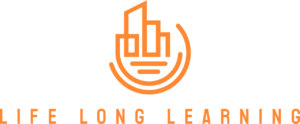Beyond the Classroom: Practical Application of Skills Learned in Software Testing Training Programs
In the ever-evolving landscape of the IT industry, software testing stands as a crucial pillar in ensuring the reliability and functionality of applications. As technology advances, so does the demand for skilled software testers who can navigate the complexities of modern software development. While classroom learning provides a solid foundation, the true mastery of software testing lies in the practical application of acquired skills.
In this blog, we delve into the realm of software testing training programs, exploring not just the theoretical concepts taught within the confines of a classroom but the essential bridge to real-world proficiency. Join us as we uncover the significance of going beyond textbooks, embracing practical scenarios, and navigating the challenges that arise in the dynamic field of software testing.
II. The Basics of Software Testing Training
Software testing training programs lay the groundwork for a comprehensive understanding of testing methodologies, quality assurance principles, and industry best practices. These programs typically cover a range of topics, including manual and automated testing, test planning, defect tracking, and more. Theoretical knowledge forms the backbone of this education, providing students with a conceptual framework to approach testing challenges.
III. Real-world Challenges in Software Testing
However, as software testers step into the real world, they encounter challenges that extend beyond the scope of theoretical understanding. Real-world projects present dynamic scenarios, unforeseen complications, and tight deadlines that demand more than textbook solutions. It’s in these situations that the limitations of theoretical knowledge become apparent, highlighting the need for practical skills and hands-on experience.
IV. Bridging the Gap: Practical Application
The transition from theoretical knowledge to practical application is where software testing training programs truly shine. Many programs are designed to incorporate hands-on experiences, practical exercises, and real-world simulations. These components allow students to apply their theoretical understanding to actual scenarios, preparing them for the challenges they will face in their professional careers.
For instance, students may engage in simulated testing environments, where they encounter scenarios mirroring those found in live projects. These exercises not only reinforce theoretical concepts but also instill the problem-solving mindset essential for successful software testers. The ability to apply knowledge in a controlled yet realistic setting becomes a valuable asset as individuals progress in their software testing journeys.
V. Case Studies: Success Stories
To illustrate the impact of practical application, let’s delve into a few success stories. Take Sarah, a recent graduate of a software testing training program. Armed with theoretical knowledge, she secured a testing position at a software development company. It wasn’t until she actively applied her skills in real projects that she truly flourished. Sarah’s ability to adapt her testing strategies to unique project requirements not only impressed her colleagues but also led to the identification and resolution of critical defects.
Such success stories emphasize the transformative power of practical experience. By sharing these narratives, we not only celebrate individual achievements but also inspire aspiring testers to recognize the value of applying their skills beyond the classroom.
VI. Industry-Relevant Tools and Technologies
In the dynamic field of software testing, staying current with industry tools and technologies is paramount. Many software testing training programs recognize this and integrate hands-on experiences with popular testing tools. This approach not only familiarizes students with industry-standard tools but also enhances their proficiency in using these tools for effective testing.
As an example, consider a training program that incorporates sessions on widely used automated testing tools. Participants not only learn the theoretical aspects of test automation but also gain practical experience by automating test cases for real-world applications. This dual approach ensures that graduates not only understand the theoretical underpinnings but can seamlessly apply their knowledge in a professional setting.
VII. Building a Portfolio: Showcasing Practical Experience
Beyond the classroom and training programs, building a compelling portfolio becomes a crucial step for aspiring software testers. A well-crafted portfolio serves as tangible evidence of one’s practical experience and skills. Encourage readers to include detailed project descriptions, the testing methodologies applied, tools utilized, and the outcomes achieved.
A strong portfolio not only demonstrates technical proficiency but also showcases the ability to apply learned skills to real-world scenarios. For instance, including before-and-after scenarios of a successfully tested application or highlighting the identification and resolution of critical issues can significantly enhance the portfolio’s impact.
VIII. Overcoming Obstacles: Tips for Practical Implementation
While the transition from training to practical implementation can be challenging, there are strategies to overcome obstacles. Share practical tips for navigating real-world projects, such as effective communication with development teams, staying updated on industry trends, and continually refining one’s testing approach based on project requirements.
Consider addressing common hurdles, like handling tight deadlines, managing unexpected changes, and collaborating with cross-functional teams. Offering practical advice on overcoming these challenges reinforces the idea that practical skills extend beyond technical abilities, encompassing effective communication and adaptability.
IX. Networking and Collaboration Opportunities
Highlight the importance of networking within the software testing community for both beginners and seasoned professionals. Discuss opportunities such as attending industry conferences, joining online forums, and participating in local meetups. Networking not only provides exposure to diverse perspectives but also opens doors to collaborative projects, mentorship opportunities, and continuous learning.
Encourage readers to actively engage in discussions, share their experiences, and seek advice from more experienced professionals. Emphasize the value of a supportive community in enhancing practical knowledge and staying updated with the latest industry trends.
Takeaway
The journey from software testing training programs to real-world proficiency is a dynamic and continuous process. While theoretical knowledge lays the foundation, practical application bridges the gap between classroom learning and professional success. The ability to navigate real-world challenges, utilize industry-relevant tools, and build a robust portfolio is essential for thriving in the competitive landscape of software testing.
By actively seeking opportunities for practical application, networking with industry professionals, and continuously refining skills, individuals can position themselves as valuable assets in the ever-evolving field of software testing. As the demand for skilled testers continues to grow, embracing practical experiences becomes not only a pathway to success but a cornerstone for shaping the future of software testing.

